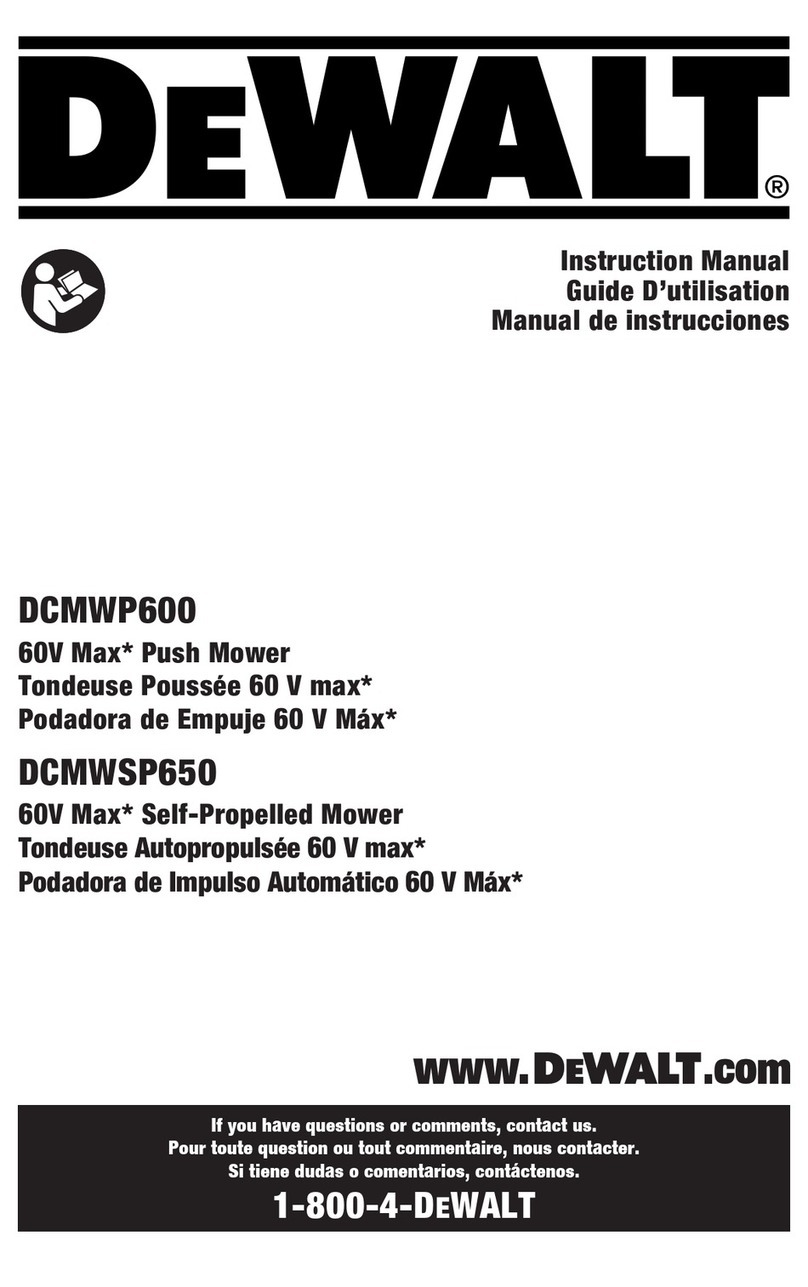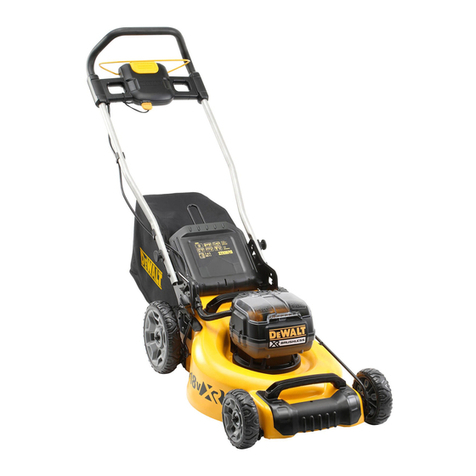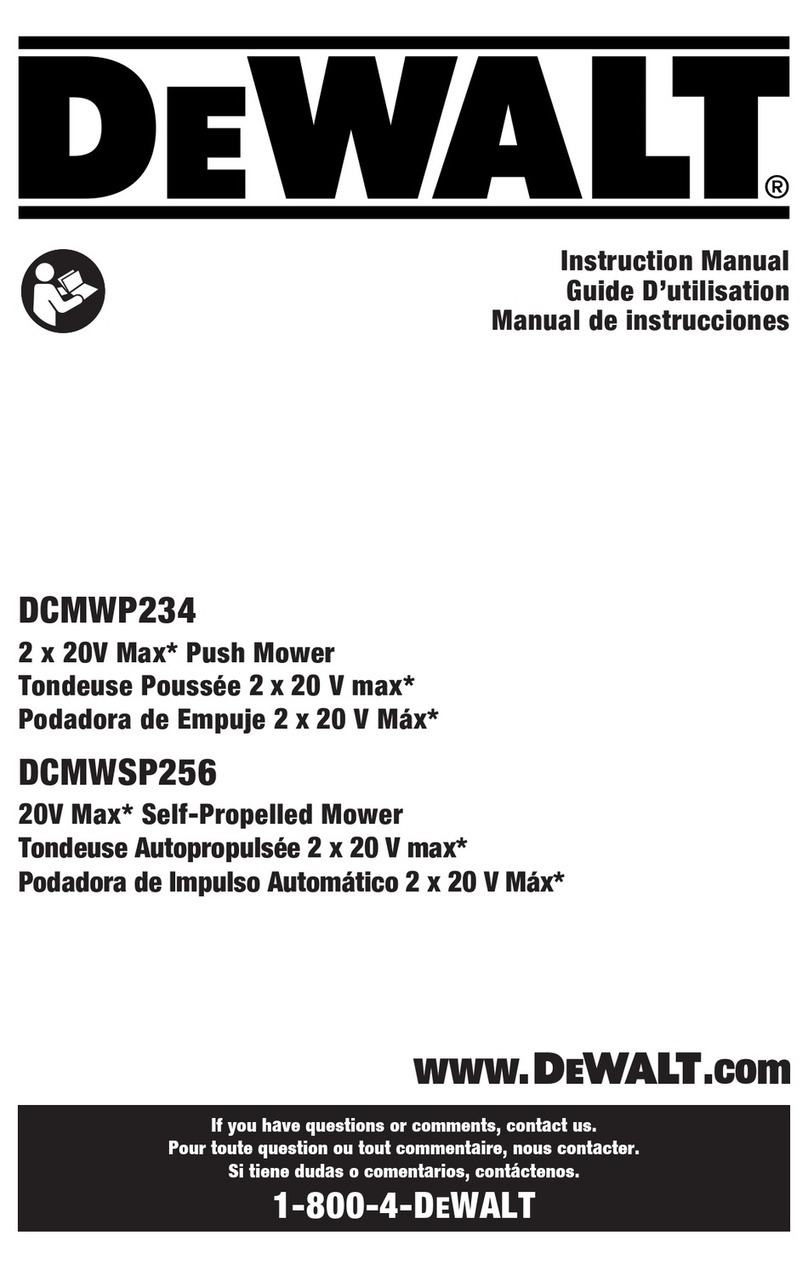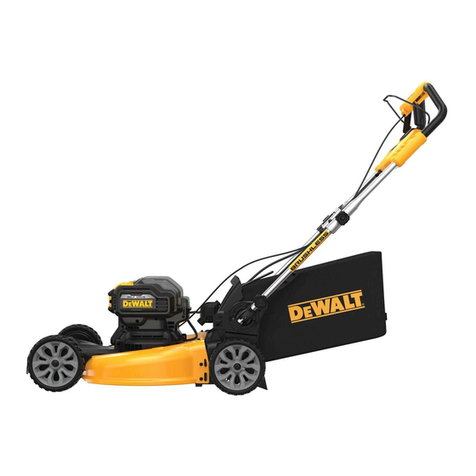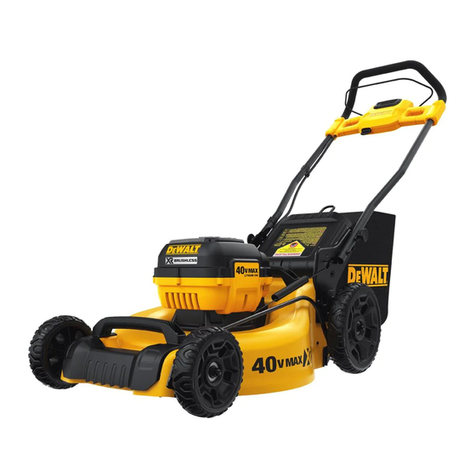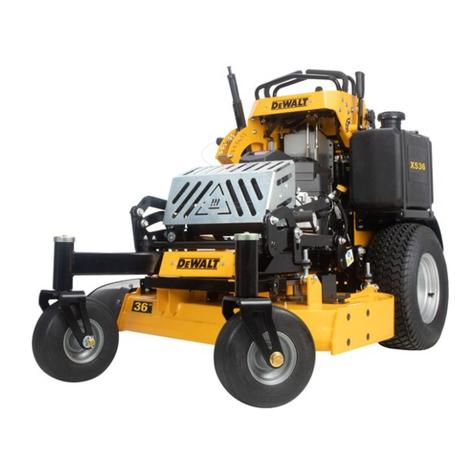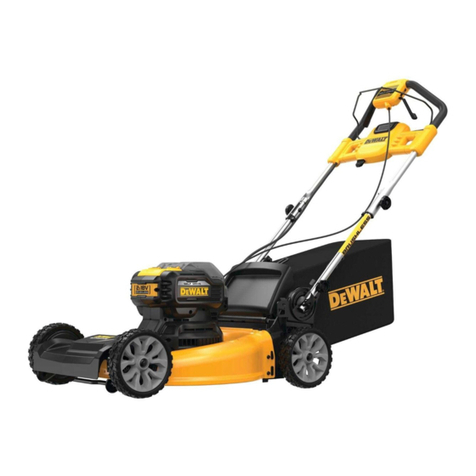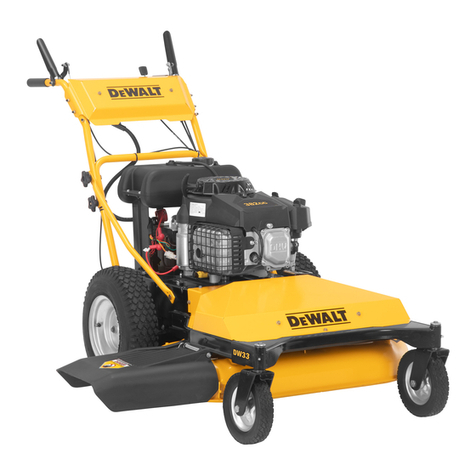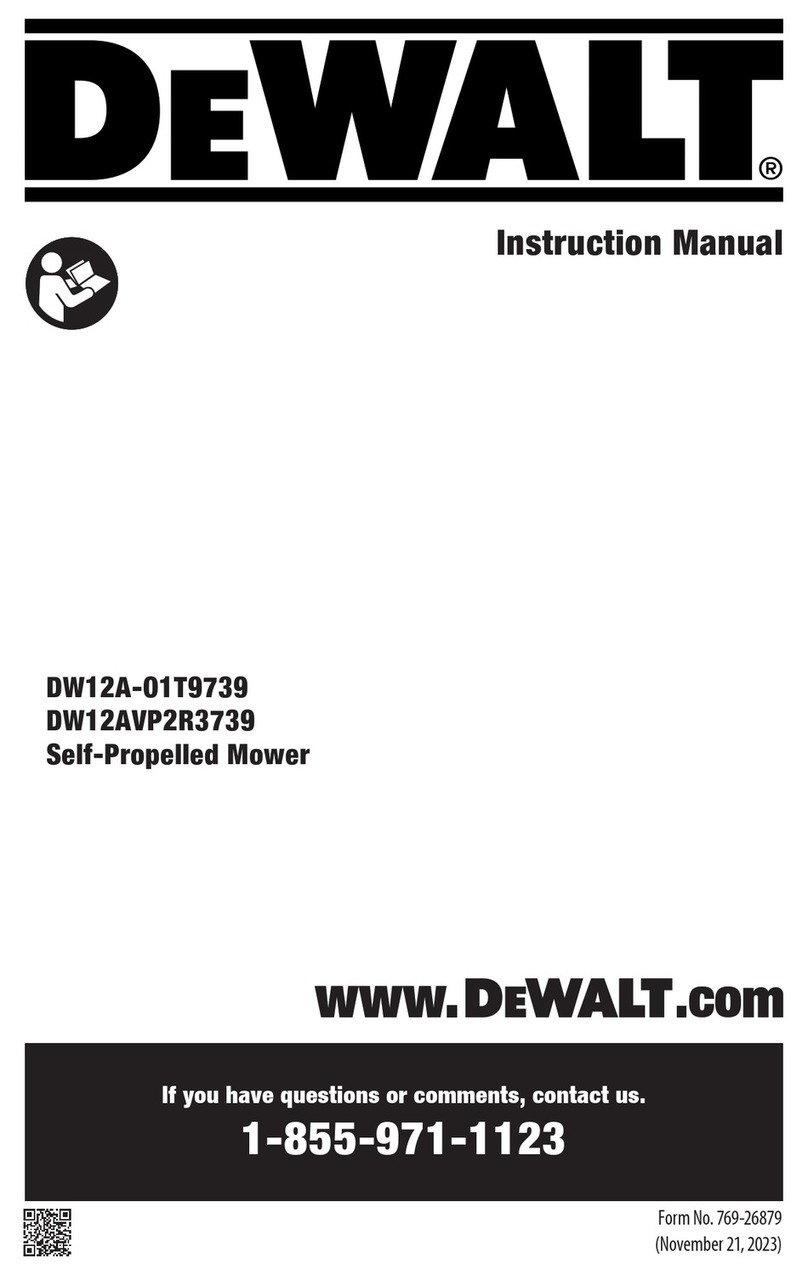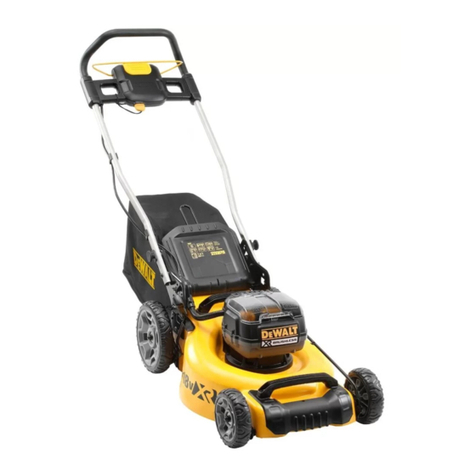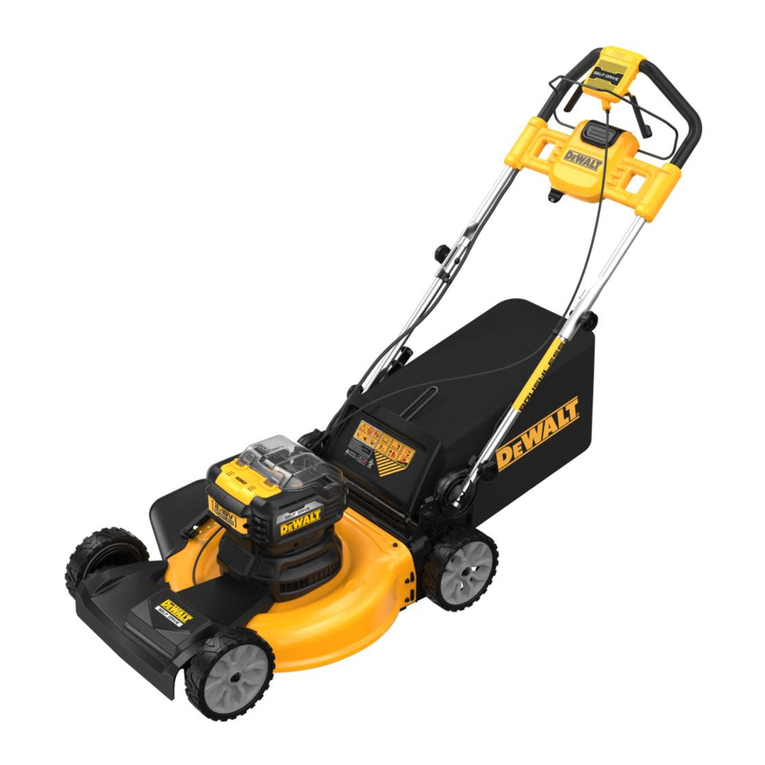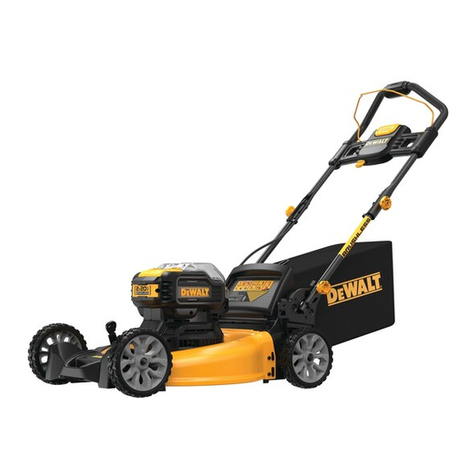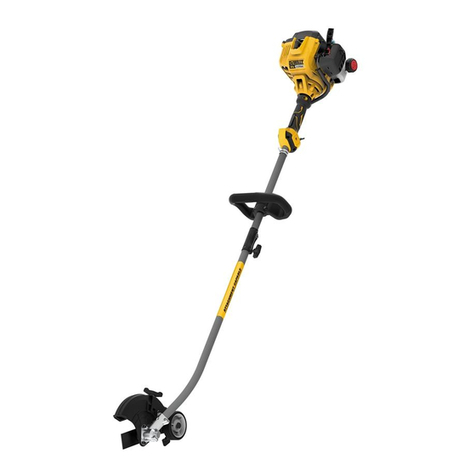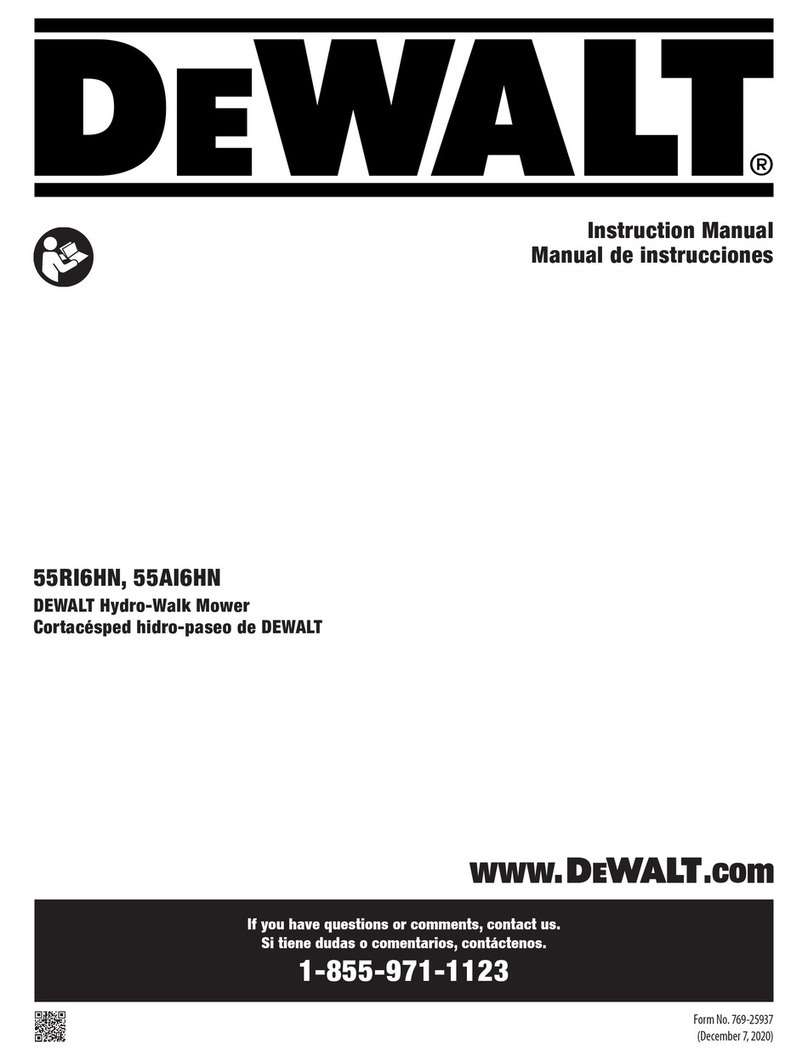
7
ENGLISH
• Be careful during adjustment of the mower to prevent
entrapment of the fingers between moving blades/parts and
fixed parts of themachine.
• When servicing the blades be aware that, even though the
power source is switched off, the blades can still bemoved.
Additional Safety Instructions for
Lawn Mowers
• Do not transport the machine while the power source
isrunning.
• Firmly grip handle with both hands when operating the
lawnmower.
• If at any time it is felt necessary to tilt the lawn mower, make
sure that both hands remain in the operating position while
the lawn mower is tilted. Keep both hands in the operating
position until the lawn mower is returned to rest correctly on
theground.
• Never wear radio or music headphones while operating the
lawnmower.
• Never attempt to make a wheel height adjustment while
the motor is running or while the safety key is in the
switchhousing.
• If the lawn mower stalls, release bail bar to turn mower off,
wait for blade to stop, before attempting to unclog the chute
or remove anything from under thedeck.
• Keep hands and feet away from cuttingarea.
• Keep blades sharp. Always use protective gloves when
handling the lawn mowerblade.
• If you are using the grass collector, check it frequently for wear
and deterioration. If excessively worn, replace with a new grass
collector for yoursafety.
• Use extreme caution when reversing or pulling the lawn
mower towardsyou.
• Do not put hands or feet near or under the lawn mower. Keep
clear of the discharger opening at alltimes.
• Clear the area where the lawn mower is to be used of objects
such as rocks, sticks, wire, toys, bones etc., which could be
thrown by the blade. Objects struck by the blade can cause
severe injury to persons. Stay behind the handle when the
motor isrunning.
• Do not operate the lawn mower barefooted or while wearing
sandals. Always wear substantialfootwear.
• Do not pull lawn mower backward unless absolutely
necessary. Always look down and behind before and while
movingbackward.
• Never direct discharged material toward anyone. Avoid
discharging material against a wall or obstruction. Material
may ricochet back toward the operator. Release the bail bar
to turn the lawn mower off and stop the blade when crossing
gravelsurfaces.
• Do not operate the lawn mower without the entire grass
collector, discharge guard, rear guard, or other safety
protective devices in place and working. Periodically check all
guards and safety protective devices to ensure they are in good
working order and will operate properly and perform their
intended function. Replace a damaged guard or other safety
device before furtheruse.
• Never leave a running lawn mowerunattended.
• Always release the bail bar to stop the motor and wait until
the blade comes to a complete stop before cleaning the lawn
mower, removing the grass bag, unclogging the discharge
guard, when leaving the lawn mower, or before making any
adjustments, repairs orinspections.
• Operate lawn mower only in daylight or good artificial light
when objects in the path of the blade are clearly visible from
the operating area of the lawnmower.
• Do not operate the lawn mower while under the influence of
alcohol or drugs, or when you are tired or ill. Always stay alert,
watch what you are doing, and use commonsense.
• Avoid dangerous environments. Never operate the lawn
mower in damp or wet grass, never use lawn mower in the
rain. Always be sure of your footing, walk, neverrun.
• If the lawn mower should start to vibrate abnormally, release
the bail bar, wait for the blade to stop and then check for
the cause immediately. Vibration is generally a warning of
trouble, see the Troubleshooting for advice in the case of
abnormalvibration.
• Always wear proper eye and respiratory protection when
operating the lawnmower.
• The use of any accessory or attachment not recommended
for use with this lawn mower could be hazardous. Only use
accessories approved by
.
• Never overreach while operating the lawn mower. Always
be sure to keep proper footing and balance at all times while
operating the lawnmower.
• Mow across the face of slopes, never up and down. Exercise
extreme caution when changing direction onslopes.
• Watch for holes, ruts, bumps, rocks or other hidden objects.
Uneven terrain could cause a slip and fall accident. Tall grass
can hideobstacles.
• Do not mow on wet grass or excessively steep slopes. Poor
footing could cause a slip and fallaccident.
• Do not mow near drop-offs, ditches, or embankments. You
could lose your footing orbalance.
• Always allow the mower to cool down beforestoring.
• Pull the plug from the socket and pull the battery pack from
the machine. Make sure that all moving parts have come to a
complete stop:
ʵ Whenever you leave the machine;
ʵ Before clearing a blockage;
ʵ Before checking, cleaning or working on theappliance.
Safety of Others
• This appliance is not intended for use by persons (including
children) with reduced physical, sensory or mental capabilities,
or lack of experience and knowledge, unless they have
been given supervision or instruction concerning use of the
appliance by a person responsible for theirsafety.
• Children must be supervised to ensure that they do not play
with theappliance.

